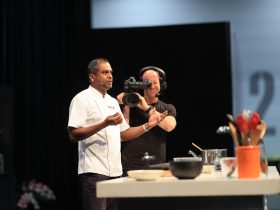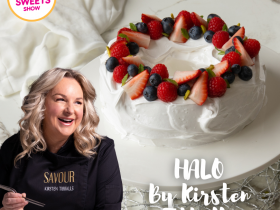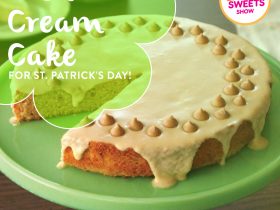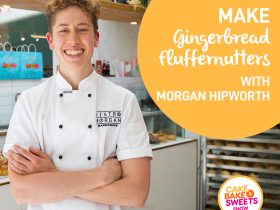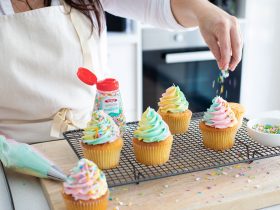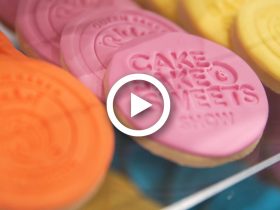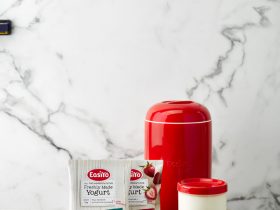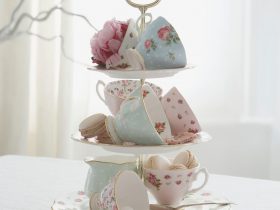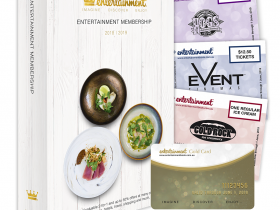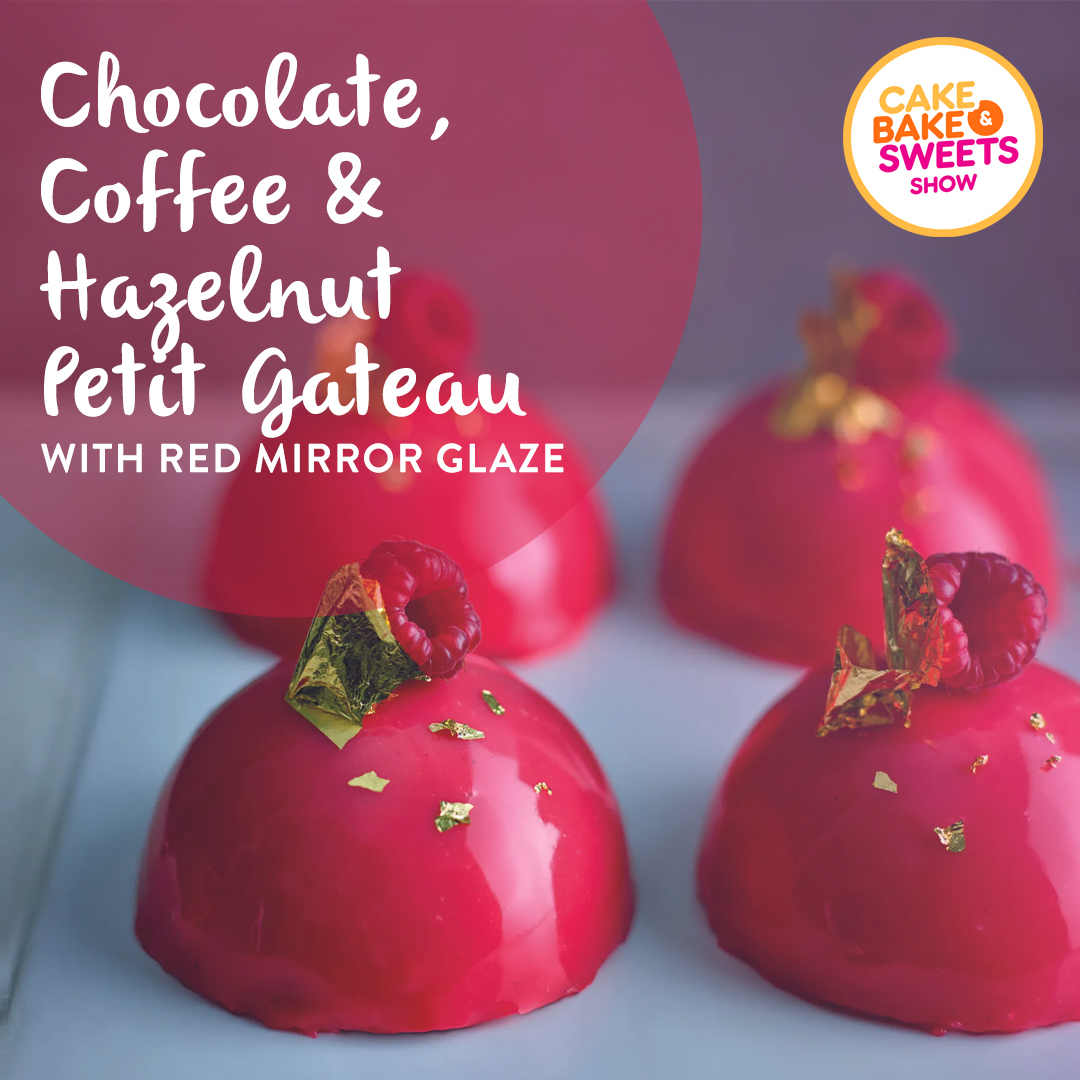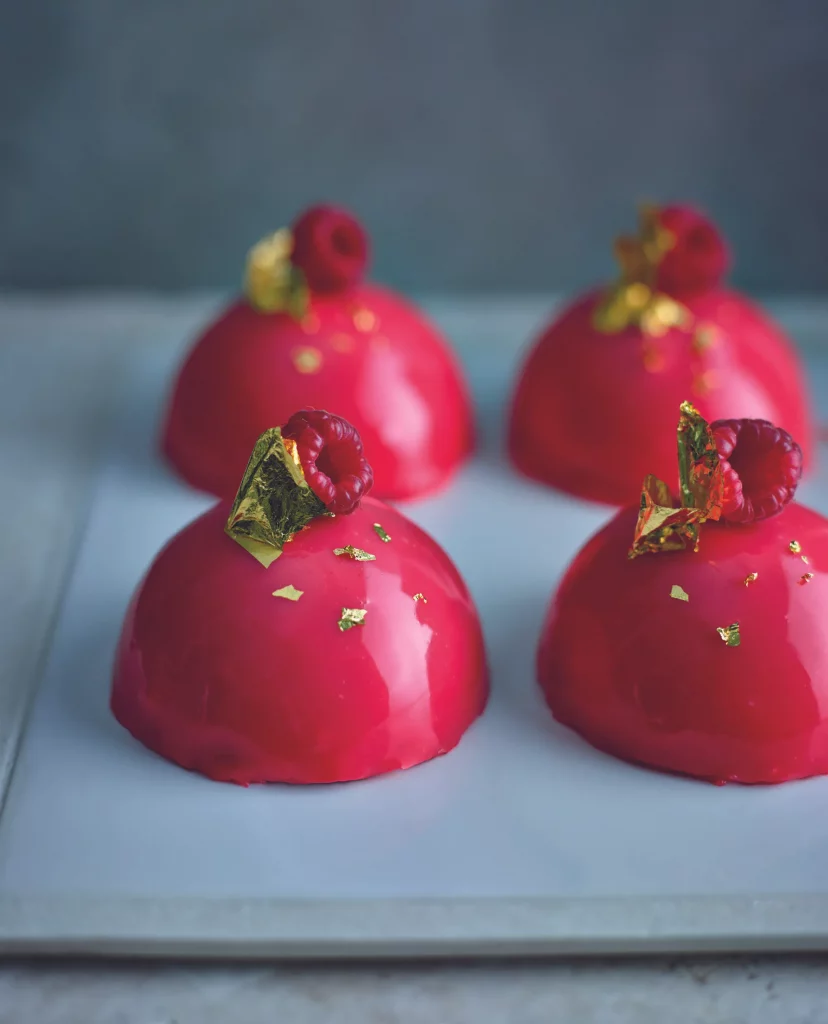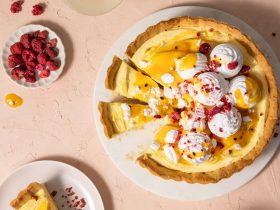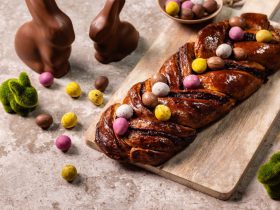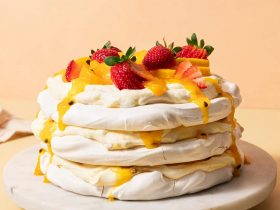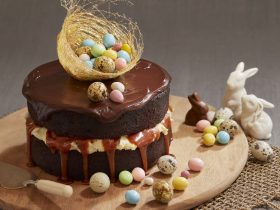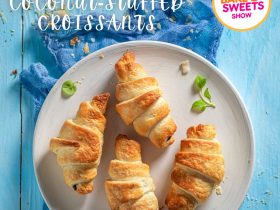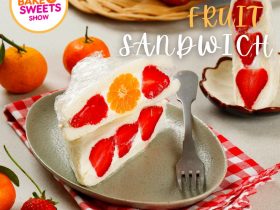What a stunner! Make your special occasion extra special with this chocolatey, nutty show-stopper. This recipe requires some special ingredients and equipment. But the end result is totally worth all the efforts.
You can order 8cm flexible 5-hole half-spherical moulds, gold-grade gelatine and neutral glaze from catering suppliers. To cut a corner in the recipe, you can use Madeira cake instead of making the joconde sponge.
INGREDIENTS
- 60 g icing sugar
- 60 g toasted hazelnuts, finely ground
- 20 g plain flour
- pinch of salt
- 2 eggs
- 1 tbsp melted butter
- 2 egg whites
- 20 g soft light brown sugar
FOR THE CHOCOLATE MOUSSE
- 4 leaf gelatine sheets (8g in total)
- 200 ml whole milk
- 2 tsp instant coffee powder
- 350 g double or whipping cream
- 250 g dark chocolate (at least 70% cocoa solids), finely chopped
FOR THE MIRROR GLAZE
- 240 g white chocolate, finely chopped
- 9 gold-grade gelatine sheets (20g in total)
- 120 ml water
- 240 g glucose syrup (at room temperature)
- 240 g white caster sugar
- 170 g condensed milk
- 100 g neutral glaze
- ⅛ tsp red gel food colouring (use Sugarflair for the bright colour)
EQUIPMENT
- 23 × 33cm Swiss roll tin, about 2.5cm deep
- hand-held electric whisk or stand mixer
- 6cm round cutter
- 3cm round cutter
- sugar thermometer (ideally a probe or laser thermometer)
- 2 × 8cm flexible 5-hole half-spherical moulds
- stick blender
TO DECORATE
- 10 raspberries
- edible gold leaf (optional)
METHOD
First make the joconde. Preheat the oven to 180°C (fan 160°C/350°F/gas 4) and line the Swiss roll tin. Put the icing sugar and ground hazelnuts into a bowl with the flour, salt and eggs. Beat well with the hand-held electric whisk for a good 8–10 minutes, until the mixture is light, fluffy and thickened. Then add the melted butter and beat for another minute until combined.
Put the egg whites in a separate bowl and whisk until they reach medium peaks. Then gradually add the soft light brown sugar, whisking all the time until you have a stiff and shiny meringue. You want to whisk them until they reach a stiff peak – you can do this in a stand mixer or with a hand-held electric whisk. If you do it by hand with a balloon whisk it will take some time, but it will be a great workout!
To check that the meringue is ready, take some on the end of the whisk, then turn the whisk meringue-covered end up – the meringue should be super stiff and not floppy. Some people say to hold the bowl over your head and then if it does not come out it is ready!
Tip the egg whites into the flour and nut mixture and fold together quickly to make sure everything is combined, then tip the mixture into the lined tin and spread it out so that it is even.
Place the tin in the oven and bake for 10–12 minutes, or until the sponge is cooked through, has a nice light brown colour and a skewer inserted into the centre comes out clean. Remove from the oven and set aside to cool. The sponge should be about 1cm thick.
Once the sponge has cooled down a little, use the 6cm cutter to cut out ten circles and the 3cm cutter to cut out another ten circles. Place these into the freezer to firm up. Save leftover cake for making cake pops or trifle.
As the sponge is firming up, make the mousse. Put the gelatine leaves in a bowl and cover with cold water. Set this aside for the gelatine to soften. Put the milk into a pan and bring it just to the boil, then as soon as it is boiling take it off the heat and stir in the instant coffee powder. Leave it for 2–3 minutes to cool down. You don’t want it to cool down too much – it needs to be used at a specific temperature a couple of stages on. While this is cooling down, whisk the double or whipping cream until it just starts to thicken, but before it reaches soft peaks.
When the gelatine is very soft and squidgy, remove it from the cold water. Make sure you take all of it out – because gelatine is a clear substance, it can sometimes get lost in the bowl.
Squeeze the gelatine out, discarding as much of the water as you can, and then put the softened gelatine into the still hot milk and whisk it together until the gelatine has completely dissolved. It is good to work quickly at this stage, as the milk needs to be pretty hot when you combine it with the chocolate.
Put the dark chocolate into a bowl, add half of the milk mixture to it and whisk together to combine. Then add the rest of the milk mixture and mix well. This chocolate milk mixture needs to be 43°C (86°F). You may need to carefully heat it or cool it down a little depending on the temperature. Once it has hit the right temperature, add the whipped cream and fold it together so it is combined. Pour this mousse mixture into the moulds, making sure that it only comes about two-thirds of the way up.
Remove the sponge discs from the freezer and place the smaller ones onto the mousse. Press each disc down so that it goes almost all the way down but not through to the bottom of the sphere. Place each large disc on top of each sphere, pressing down only a tiny bit. Fill each sphere to the top with chocolate mousse and use a palette knife to scrape along the top of the spheres to level them. Place the filled moulds into the freezer for 2–3 hours to firm up or even overnight if you want to carry on making this the next day.
When the gateaux are firm, keep them in the freezer and make the mirror glaze. Put the white chocolate in a tall container (the one that comes with the stick blender is great, however a tall jug works well). Put the gold gelatine in a bowl and cover with some cold water and set aside for the moment.
Put the 120ml water, 240g glucose and 240g caster sugar into a small pan over a low heat and allow the glucose to dissolve. Bring the mixture to the boil and heat until it reaches 103°C (217°F). As soon as the temperature reaches 103°C (217°F), whisk in the soaked gelatine (being sure to squeeze out all of the excess water and discard the soaking water) and then quickly pour it onto the white chocolate.
Use the stick blender to combine it all together, moving the blender slowly around the container. Make sure that you don’t bring the blender above the surface of the chocolate mixture otherwise this will cause bubbles to appear – the trick is not to get any bubbles into this. Once it is smooth, add the condensed milk and the neutral glaze along with the food colouring and blend again until smooth, this should take a few minutes. Again, make sure the stick blender does not come above the surface of the liquid, as this can cause bubbles to appear. Allow the glaze to cool to 28–31°C (81–87°F) – this takes about an hour.
Once the glaze is ready to use and at the correct temperature, cover your work surface with some cling film and then put a rack on top. Depending on the size of your rack, you may need to use two racks so that the gateaux are spaced out. Remove the gateaux from the freezer and pop each one out onto the rack, flat-side down.
Pour the glaze steadily over the centre of each gateau, allowing the glaze to flow over the top and sides for a smooth coating and the excess to fall into the cling film below. If you think the covering looks thick, use a palette knife to very gently scrape the excess off the top. Give each gateau a second covering and then allow to set.
If you put them into the fridge they can lose their shine, so it is best to leave them in a cool dry place to set and then serve. However, if you have to put them in the fridge, the shine will usually come back when the cakes warm up.
Use a palette knife to loosen and lift each gateau from the wire rack. Arrange them on a serving plate, and then decorate with one of the raspberries and edible gold leaf, if desired. Serve.



